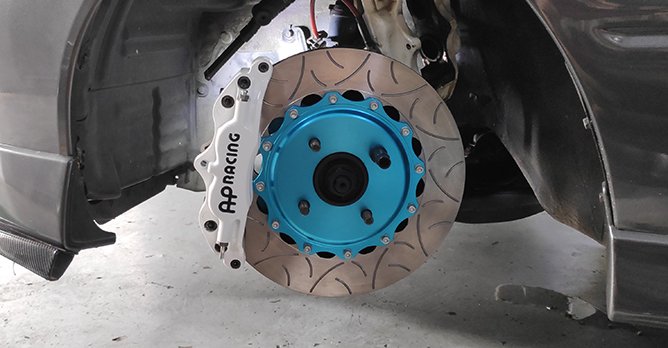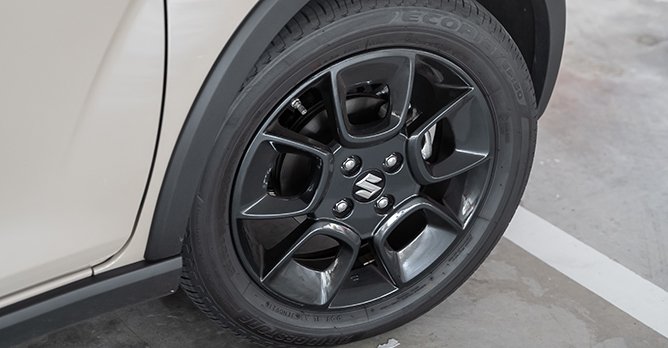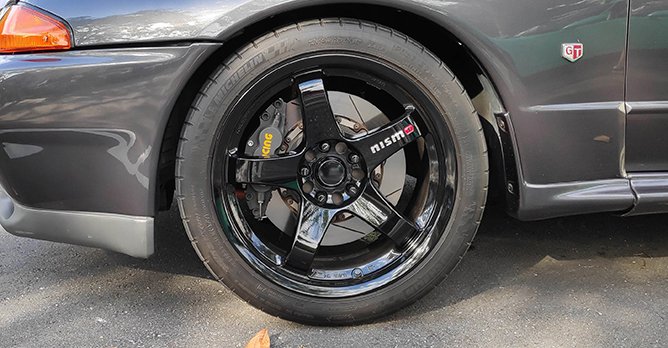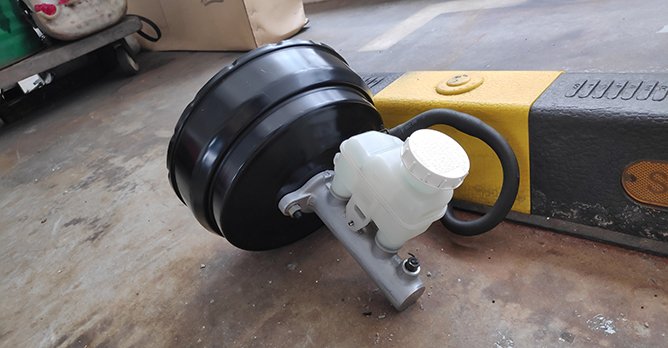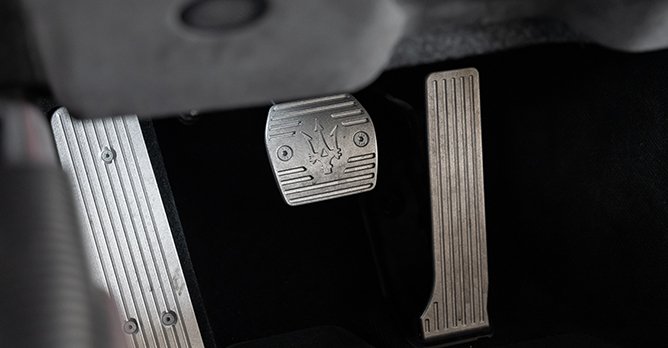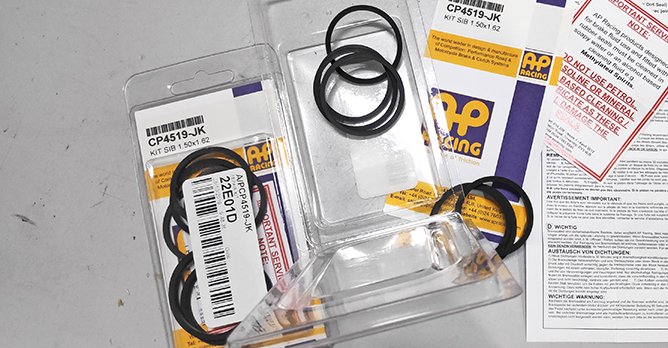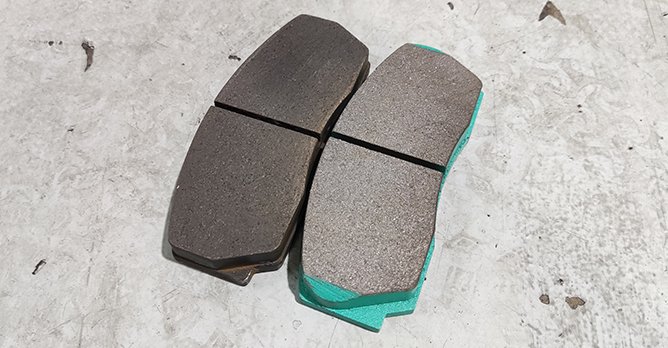What they don't tell you: The downsides of installing a big brake kit
01 Jul 2022|60,230 views
I'm sure you have heard of how a big brake kit upgrade will totally transform the way your car drives. Want your car to slow down and stop better? Just go ahead and replace the original brakes on your car with an aftermarket big brake!
Or, at least, that's what most people out there are suggesting. While it is true that a car's braking performance can be improved with the addition of an upgraded brake kit (typically referring to the calipers and rotors), it takes a bit more than just slapping them on if you are looking to reap the full benefit of a braking system upgrade. Moreover, there are other points of consideration when making such a choice as well!
So, here are a few things that you need to consider before parting with your money.
1. Larger rotational and unsprung mass (if your car has very small brakes originally)
While the marketing team and your fellow car enthusiast friends might hawk weight savings as a reason to opt for a brake upgrade, it might not always be the case.
Well, yes, aftermarket brake kits are often made out of lighter materials - the calipers are aluminium instead of cast iron like the standard bits.
The rotors are also often of a two-piece construction with a lightweight aluminium centre hat to reduce weight as well. So it would likely be lighter than a similar-sized factory brake kit.
However, if your car originally has a set of very small brakes, the extra material of a much larger rotor (the braking surface is made of cast iron) and the larger caliper will likely result in an increased rotational and unsprung mass instead.
And as we all know, increased rotational and unsprung mass can hinder acceleration, handling and even the braking characteristics of your car.
Hence it is important to consider these points and avoid opting for a set of brakes that is way larger than what your car needs.
2. Rims clearance issue
You've decided you definitely need and want a big brake kit, that's fine. But remember, a larger brake kit with larger diameter rotor will require a suitable size of rim in order to clear. For example, a four-pot caliper with a 330mm diameter rotor will typically require the use of 17-inch or larger rims.
But there is yet another possible complication. You see, these beefy upgraded calipers can sometimes be rather thick. And this would require rims of certain specification (width and offset), and/or design in order for the spokes to clear the caliper - simply having a large diameter rim might not work.
Therefore, an aftermarket upgraded brake kit can actually limit the range of rim choices, spoiling your plans to get your favourite set of rims.
3. Poorly matched brake master cylinder bore sizing
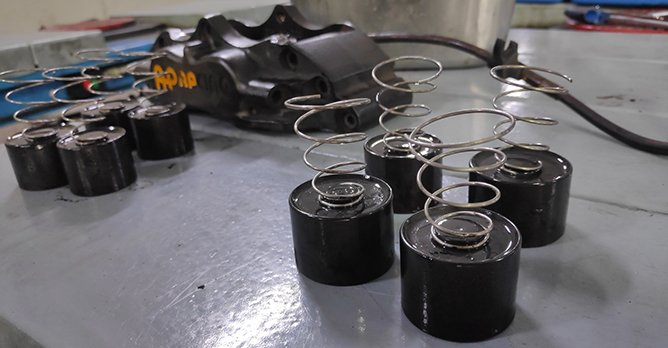
The improvement in braking performance that a larger, upgraded brake kit provides is mainly due to the larger total surface area of the pistons within the caliper that pushes the brake pads against the rotor to provide stopping force - this can be achieved with either more pistons (four-pot, six-pot, or more), or with larger sized pistons.
But here's something to consider. When the total surface area of the caliper's pistons is increased, it will require more brake fluid to be displaced in order push the pistons far enough to achieve the intended braking performance.
To put it in simpler terms, this means that if you have upgraded to a big brake kit without upgrading to a suitably-sized brake master cylinder with a larger bore, you won't be able to maximise the braking power that the brake kit is able to provide.
With an undersized brake master cylinder bore, your brake might still provide a stronger initial bite (which can make it more difficult to control the brakes), but actually performs similar or worse than before during occasions where you have to fully apply the brakes - such as on the track.
4. Change in brake pedal feel and characteristics
So you have an upgraded brake kit, along with an upsized master cylinder with a larger bore to match. Congrats on doing everything right!
But now, you face yet another issue. A larger master cylinder bore results in a shorter total brake pedal travel, and a stiffer brake pedal feel. This is desirable in race use due to a more predictable braking performance and excellent modulation.
However, for day-to-day usage, it might not be the best setup as you will have to apply more pressure on the brake pedal in order to bring the car to a stop - something that can be disconcerting and potentially difficult to operate for unfamiliar drivers.
5. Difficulty in sourcing for brake pads, rotors and seals in the future
With original brakes that come with the car, there are plenty of replacement options, be it for the brake pads, rotors, or even a full repair kit consisting of seals, pistons and other components.
You'll be able to choose from original replacement parts from your car's manufacturer, OE-equivalent third-party replacement parts (cheaper), or even uprated aftermarket upgrade parts (better, but more expensive).
If you were to opt for an aftermarket big brake kit, the consumables might be of a proprietary design. This means that options for replacement components can be limited. And in the worst case scenario, where it be discontinued in the future, you might be stuck with an expensive paperweight.
Do you really need a big brake kit?
Now that we have explored the possible downsides of a big brake kit, there's still one last, and arguably most important question - do you really need it?
Cars are equipped with brakes that their manufacturers deem adequate after plenty of research and development. And even if you have increased the power of your car, or frequent track days with it, all you might really need could just be high-temp brake pads, fluids and steel-braided hoses.
So, before you shell out for a fancy big brake kit, stop and take a moment to consider these factors.
Want to improve your car with modifications? Check out these articles:
These 5 car mods will attract LTA officers like bees to a honey pot
5 types of car aesthetic modifications you should do
These boy racer mods are making your car worse
What are the different types of car bodykits to choose from
Still believe what you need is a big brake kit? Check out the options you have here. You can also visit these recommended brake kit specialists to get some useful advice.
I'm sure you have heard of how a big brake kit upgrade will totally transform the way your car drives. Want your car to slow down and stop better? Just go ahead and replace the original brakes on your car with an aftermarket big brake!
Or, at least, that's what most people out there are suggesting. While it is true that a car's braking performance can be improved with the addition of an upgraded brake kit (typically referring to the calipers and rotors), it takes a bit more than just slapping them on if you are looking to reap the full benefit of a braking system upgrade. Moreover, there are other points of consideration when making such a choice as well!
So, here are a few things that you need to consider before parting with your money.
1. Larger rotational and unsprung mass (if your car has very small brakes originally)
While the marketing team and your fellow car enthusiast friends might hawk weight savings as a reason to opt for a brake upgrade, it might not always be the case.
Well, yes, aftermarket brake kits are often made out of lighter materials - the calipers are aluminium instead of cast iron like the standard bits.
The rotors are also often of a two-piece construction with a lightweight aluminium centre hat to reduce weight as well. So it would likely be lighter than a similar-sized factory brake kit.
However, if your car originally has a set of very small brakes, the extra material of a much larger rotor (the braking surface is made of cast iron) and the larger caliper will likely result in an increased rotational and unsprung mass instead.
And as we all know, increased rotational and unsprung mass can hinder acceleration, handling and even the braking characteristics of your car.
Hence it is important to consider these points and avoid opting for a set of brakes that is way larger than what your car needs.
2. Rims clearance issue
You've decided you definitely need and want a big brake kit, that's fine. But remember, a larger brake kit with larger diameter rotor will require a suitable size of rim in order to clear. For example, a four-pot caliper with a 330mm diameter rotor will typically require the use of 17-inch or larger rims.
But there is yet another possible complication. You see, these beefy upgraded calipers can sometimes be rather thick. And this would require rims of certain specification (width and offset), and/or design in order for the spokes to clear the caliper - simply having a large diameter rim might not work.
Therefore, an aftermarket upgraded brake kit can actually limit the range of rim choices, spoiling your plans to get your favourite set of rims.
3. Poorly matched brake master cylinder bore sizing

The improvement in braking performance that a larger, upgraded brake kit provides is mainly due to the larger total surface area of the pistons within the caliper that pushes the brake pads against the rotor to provide stopping force - this can be achieved with either more pistons (four-pot, six-pot, or more), or with larger sized pistons.
But here's something to consider. When the total surface area of the caliper's pistons is increased, it will require more brake fluid to be displaced in order push the pistons far enough to achieve the intended braking performance.
To put it in simpler terms, this means that if you have upgraded to a big brake kit without upgrading to a suitably-sized brake master cylinder with a larger bore, you won't be able to maximise the braking power that the brake kit is able to provide.
With an undersized brake master cylinder bore, your brake might still provide a stronger initial bite (which can make it more difficult to control the brakes), but actually performs similar or worse than before during occasions where you have to fully apply the brakes - such as on the track.
4. Change in brake pedal feel and characteristics
So you have an upgraded brake kit, along with an upsized master cylinder with a larger bore to match. Congrats on doing everything right!
But now, you face yet another issue. A larger master cylinder bore results in a shorter total brake pedal travel, and a stiffer brake pedal feel. This is desirable in race use due to a more predictable braking performance and excellent modulation.
However, for day-to-day usage, it might not be the best setup as you will have to apply more pressure on the brake pedal in order to bring the car to a stop - something that can be disconcerting and potentially difficult to operate for unfamiliar drivers.
5. Difficulty in sourcing for brake pads, rotors and seals in the future
With original brakes that come with the car, there are plenty of replacement options, be it for the brake pads, rotors, or even a full repair kit consisting of seals, pistons and other components.
You'll be able to choose from original replacement parts from your car's manufacturer, OE-equivalent third-party replacement parts (cheaper), or even uprated aftermarket upgrade parts (better, but more expensive).
If you were to opt for an aftermarket big brake kit, the consumables might be of a proprietary design. This means that options for replacement components can be limited. And in the worst case scenario, where it be discontinued in the future, you might be stuck with an expensive paperweight.
Do you really need a big brake kit?
Now that we have explored the possible downsides of a big brake kit, there's still one last, and arguably most important question - do you really need it?
Cars are equipped with brakes that their manufacturers deem adequate after plenty of research and development. And even if you have increased the power of your car, or frequent track days with it, all you might really need could just be high-temp brake pads, fluids and steel-braided hoses.
So, before you shell out for a fancy big brake kit, stop and take a moment to consider these factors.
Want to improve your car with modifications? Check out these articles:
These 5 car mods will attract LTA officers like bees to a honey pot
5 types of car aesthetic modifications you should do
These boy racer mods are making your car worse
What are the different types of car bodykits to choose from
Still believe what you need is a big brake kit? Check out the options you have here. You can also visit these recommended brake kit specialists to get some useful advice.









